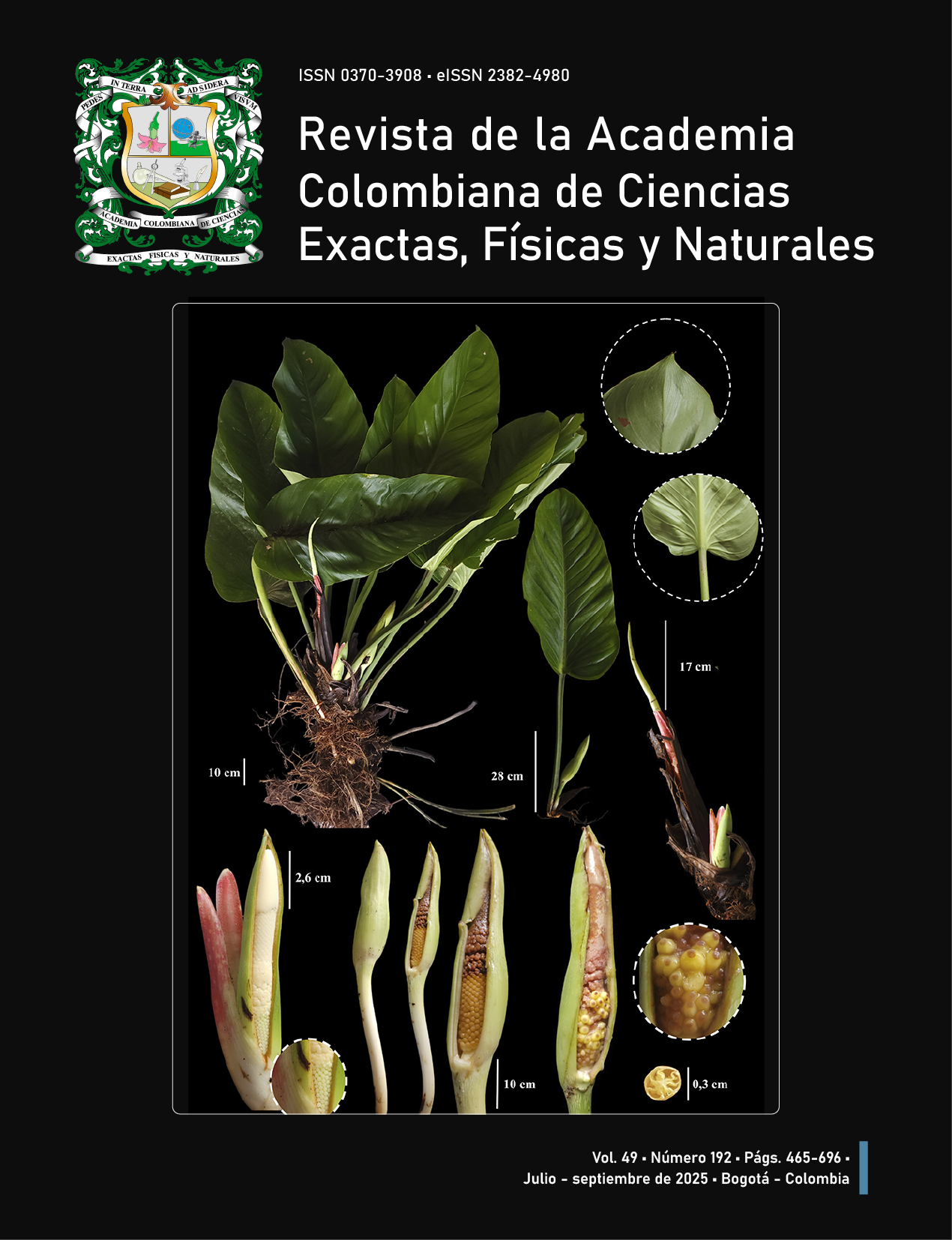Resumen
Las teorías del modelo estándar (ME) y de la relatividad general (RG) no proporcionan todas las respuestas a los problemas que actualmente se plantean en la física teórica de altas energías. No obstante, la teoría de cuerdas constituye un marco teórico muy fértil donde es posible encontrar varias respuestas y construir una física que trascienda el modelo estándar. Además, dicha teoría es la candidata más convincente para convertirse en la teoría cuántica de la gravedad. Hacemos aquí una primera aproximación a la teoría de cuerdas bosónicas incluyendo algunos resultados importantes incorporados a los agujeros negros en el contexto de la dualidad holográfica.
Referencias
Aharony, O., Gubser, S. S., Maldacena, J., Ooguri, H., y Oz, Y. (2000, enero). Large n field theories, string theory and gravity. Physics Reports, 323(3–4), 183–386. Descargado de http://dx.doi.org/10.1016/S0370-1573(99)00083-6 doi:10.1016/s0370-1573(99)00083-6
Ammon, M., y Erdmenger, J. (2015). Gauge/gravity duality: Foundations and applications.Cambridge University Press.
Becker, K., Becker, M., y Schwarz, J. H. (2006). String theory and m-theory: A modern introduction. Cambridge University Press. doi: 10.1017/CBO9780511816086
Blau, M. (2023). Lecture Notes on General Relativity. Descargado de http://www.blau.itp.unibe.ch/GRLecturenotes.html
Bousso, R. (2002, agosto). The holographic principle. Reviews of Modern Physics, 74(3), 825–874. Descargado de http://dx.doi.org/10.1103/RevModPhys.74.825
Edelstein, J., y Giribet, G. (s.f.). Cuerdas y supercuerdas (R. Coleccionables, Ed.).
Erdmenger, J. (2018). Introduction to gauge/gravity duality (tasi lectures 2017).
Giribet, G. (2023). Introduction to ads/cft. Descargado de https://youtu.be/D_tH0hMSVE?si=Oju15b-kMwcwPnSB
Harlow, D. (2018). Tasi lectures on the emergence of the bulk in ads/cft.
Hartnoll, S. A., Lucas, A., y Sachdev, S. (2018). Holographic quantum matter.
Lust, D., y Vleeshouwers,W. (2018). Black hole information and thermodynamics.
Maldacena, J. (1999). The large-n limit of superconformal field theories and supergravity. International Journal of Theoretical Physics, 38(4), 1113–1133. Descargado de http://dx.doi.org/10.1023/A:1026654312961 doi: 10.1023/a:1026654312961
Maldacena, J. (2014). The gauge/gravity duality.
Natsuume, M. (2015). Ads/cft duality user guide. Tokyo: Springer Japan. Descargado de https://doi.org/10.1007/978-4-431-55441-7
Policastro, G., Son, D. T., y Starinets, A. O. (2001, agosto). Shear viscosity of strongly coupled n=4 supersymmetric yang-mills plasma. Physical Review Letters, 87(8), .
Descargado de http://dx.doi.org/10.1103/PhysRevLett.87.081601 doi:10.1103/physrevlett.87.081601
Probst, J. (2018). Applications of the gauge/gravity duality. Springer Cham. doi: https://doi.org/10.1007/978-3-319-93967-4
Rickles, D. (2014). A brief history of string theory (1.a ed.). Springer Berlin, Heidelberg. doi: https://doi.org/10.1007/978-3-642-45128-7
Strominger, A., y Vafa, C. (1996). Microscopic origin of the bekenstein-hawking entropy. Physics Letters B, 379(1), 99-104. Descargado de https://www.sciencedirect.com/science/article/pii/0370269396003450 doi: https://doi.org/10.1016/0370-2693(96)00345-0
Susskind, L. (1995, noviembre). The world as a hologram. Journal of Mathematical Physics, 36(11), 6377–6396. Descargado de http://dx.doi.org/10.1063/1.531249 doi: 10.1063/1.531249
’t Hooft, G. (1993). Dimensional reduction in quantum gravity
Zaffaroni, A. (2000, septiembre). Introduction to the ads-cft correspondence. Classical and Quantum Gravity, 17(17), 3571. Descargado de https://dx.doi.org/10.1088/0264-9381/17/17/306

Esta obra está bajo una licencia internacional Creative Commons Atribución-NoComercial-SinDerivadas 4.0.
Derechos de autor 2025 Revista de la Academia Colombiana de Ciencias Exactas, Físicas y Naturales


